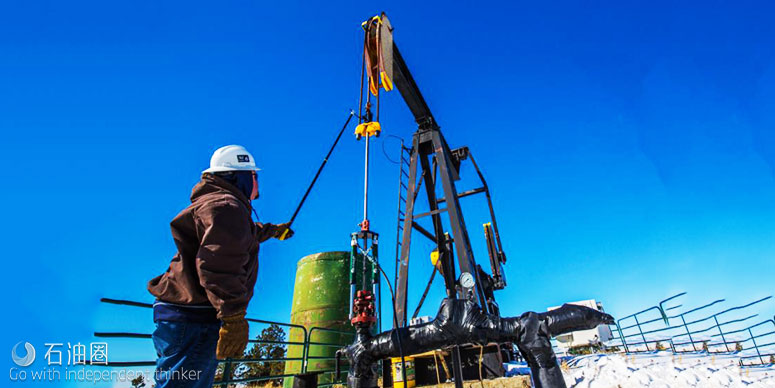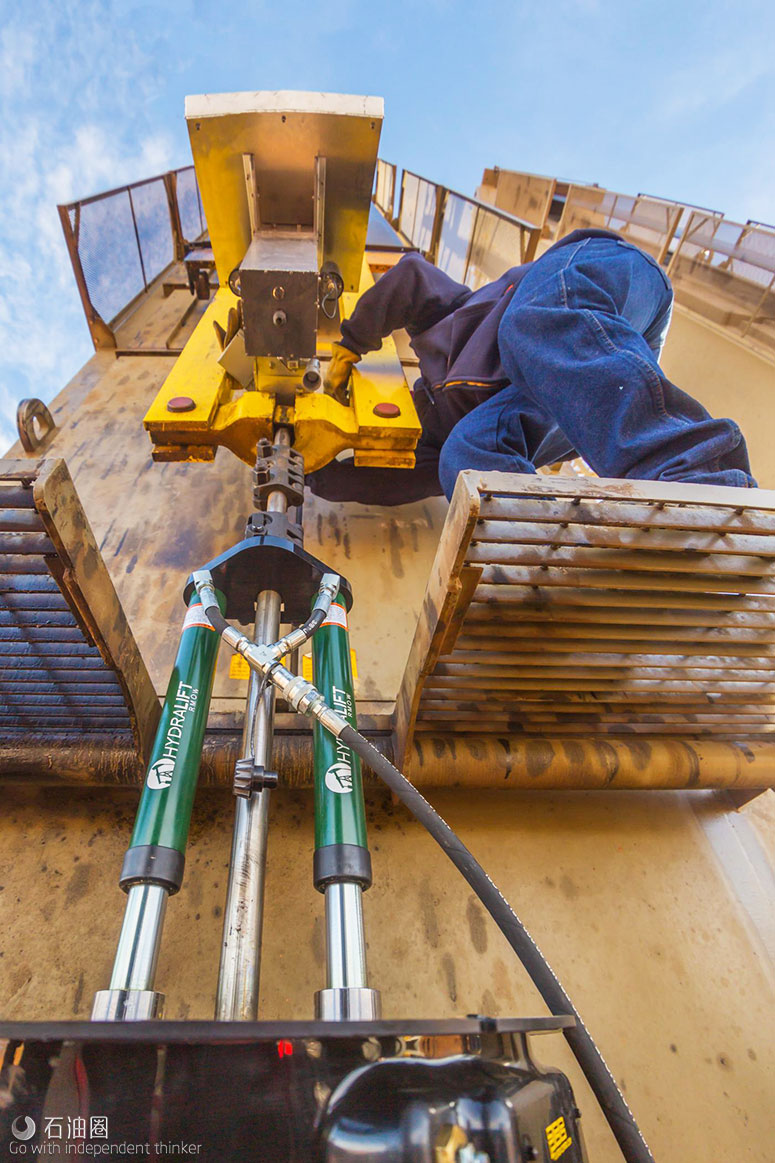A New Approach To Plunger Spacing
Adjusting the spacing in a rod pump is a task that production personnel have been performing for decades and will continue to do for decades to come. The most common reason for adjusting pump spacing is to induce or remove a tag on the downhole pump. This method also is performed to increase production by fine-tuning plunger depth in the pump, thus creating a better compression ratio.
It is imperative to accurately space a pump plunger to ensure optimal production. This practice also will extend the life of downhole equipment. There are several different methods of doing this. Some are unsafe, age-old and hard on surface equipment and others are time-consuming and expensive. Developing a system that is a cost-saver, a time-saver and safer than traditional methods while also optimizing production is a challenge.
The Hydralift utilizes synchronized hydraulic cylinders and an engineered lifting plate to raise and lower the rodstring, creating a safer and more efficient method of pump spacing. The Hydralift allows permanent spacers to be installed above the carrier bar providing the ability to fine-tune the depth of a traveling assembly without the need of a crew. In addition, the interior teardrop design of the spacer allows for easy removal or insertion of the spacer. These tasks can be performed by an individual without leaving the ground. The Hydralift is available in two different options, which enables the system to fit any style stuffing box.
The single-plated option allows the tool to rest directly on the flange of the stuffing box, and the double-plated option allows the Hydralift to sit directly on top of any stuffing box that does not have a flange. The system, which includes the Hydralift and spacers, has been rated to safely handle 40,000 lb with a built-in safety factor of 50%, and has been tested with up to 60,000 lb. The hydraulic pump has a 10,000-psi capacity, along with its 0.37-kw motor, and delivers enhanced speeds and run times. In addition, the system is powered by a 28-volt lithium ion battery, which allows operations in any environment and in any condition. Hydralift maintenance primarily includes checking the level of hydraulic oil in the pump and keeping both hose connections clean and the pump batteries charged. The tool’s operating life and cleanliness can be extended for long periods of time by storing it in the provided Pelican protective case.
Cost and time savings
As the oil and gas industry begins to focus on maximizing profits and reducing lease operating expenses, the Hydralift system serves as an alternative to third-party service companies hired to adjust spacing. These services often include a crew of workers as well as heavy equipment such as bucket trucks and cranes. This equipment can be costly and subjects the production company to unnecessary risks and often leads to several days of lost production. Hydralift allows a single operator to respace a problem well, eliminating long downtimes and costly production losses.
The traditional procedure for tagging a well is to shut it down and schedule a contractor to adjust the rods off of the tag. These jobs often require several wells to be adjusted before a contractor will visit the site to perform the needed work. With Hydralift the work can be performed the same day without hired help. In comparison to traditional methods, the task can be performed in minutes as opposed to hours and will not sacrifice production. Because the system has the ability to lift and lower the rodstring on its own, the pumping unit needs to be locked and tagged out once.
The system also helps with savings for equipment repairs. Typically when a pump is left on tag, it damages several components over time, the first being the downhole pump itself. The valve rod or pull tube guide and bushing are not made to impact each other on a constant basis. This jolt sends the rodstring into compression, which damages the rods and connections. This downhole friction also is destructive to the pumping unit at surface. Those prime movers are designed for smooth, uninterrupted strokes. With the Hydralift, these repairs and damage to equipment are avoided.
The spacer system reduces the need for clamp adjustments by installing and removing spacers with the Hydrastick spacer pole. Once installed or removed, the rods are lowered back down, the unit is turned back on and pumping can recommence. With the traditional method of stacking out rods on a “toadstool” or “suitcase,” the pumping unit has to be locked and tagged out three different times. Compared to hiring roustabouts with heavy equipment to perform the task, the well can be respaced with a Hydralift before the crane is even rigged up.
Enhanced safety
The system is designed to eliminate a few potential hazards, the fi rst of which is working from an elevated platform. Traditionally, the top clamp has to be adjusted on every spacing job. This task is often performed on a shaky ladder or from the tailgate of a truck parked inches away from the wellhead. Another hazard that the system eliminates is the dead zone between the top clamp and carrier bar, which has caused workers to lose limbs or even their lives. In addition, the system is designed to reduce the chances of injury by distancing the user from this hazardous area and by allowing the operator to keep the pawl and brake engaged for the entire process.
Production optimization
Optimizing production is a skilled and detailed task. For rod pump wells, knowing exactly where a traveling valve is in relationship to the bottom is key for battling downhole conditions. Once a bottom tag is identified, the Hydralift spacers can do just that. The installation of spacers can fine-tune plunger depth to the nearest inch leaving operators with the highest compression ratio possible.
Strategically spacing pumps can improve the dynamometer cards for many common issues. Gas interference, stuck open traveling valves and friction from scale are a few issues that can be completely fixed by changing the plunger depth inside the barrel of the pump. The most common and easily mitigated issue for the Hydralift is a tagging pump. This occurs when the pull tube or valve rod bushing pounds on the top of the rod guide. This problem can be addressed by raising the rods, inserting a spacer and restarting the well. If the well needs to be tagged in the future, the operator can remove the spacer, tag to remove solids, ensure trash has moved out of the pump and reinstall the spacer.

 石油圈
石油圈

